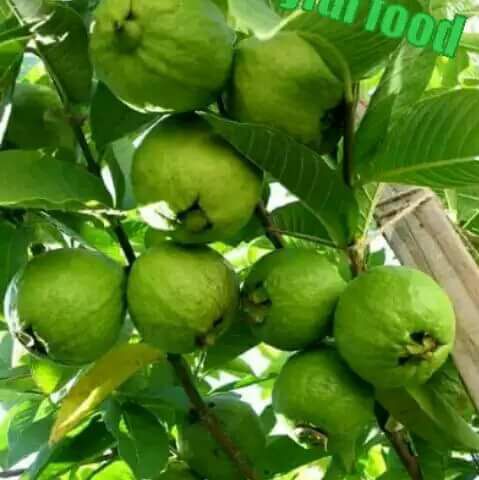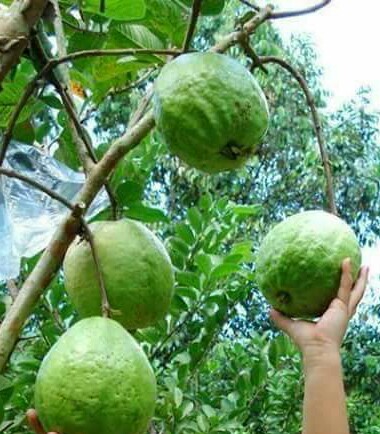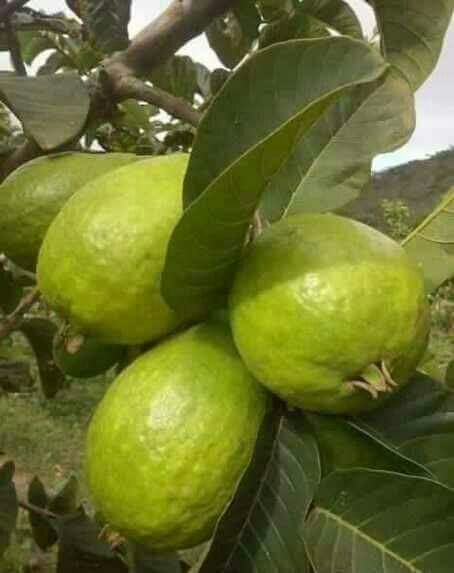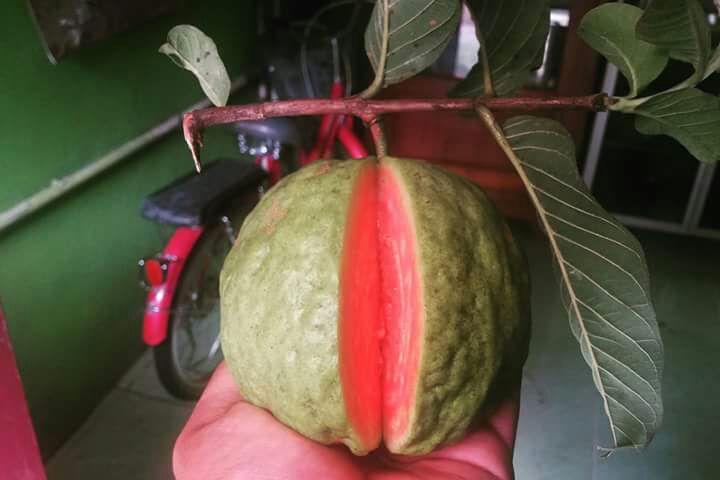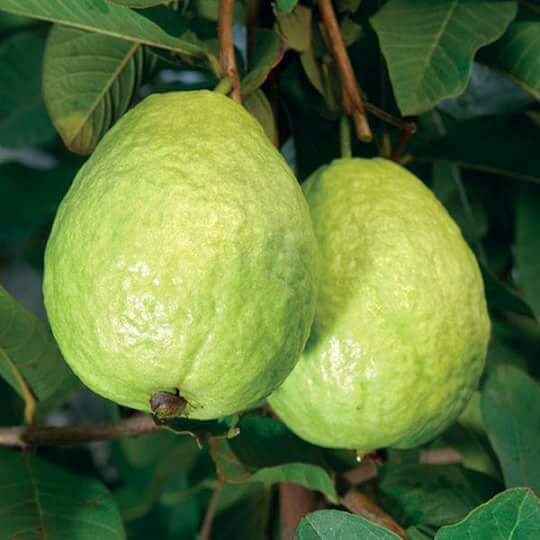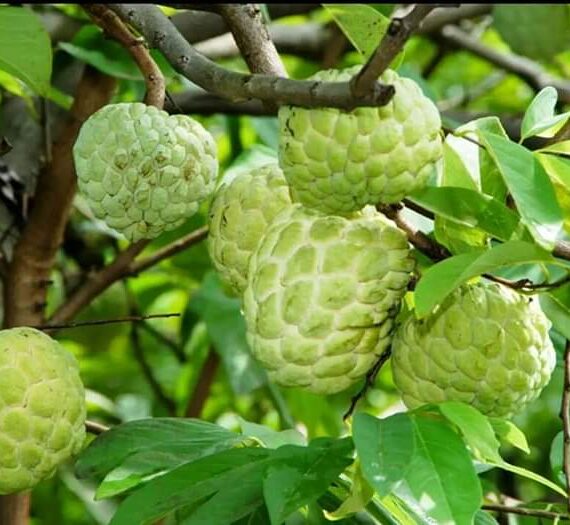Description
Introduction
Guava is called Guava in English. Botanical name Cidium guayava, species Cidium, species Guayava, Kul Mitsi).
Scientists think that guava originated from the tropical part of America and the West Indies. It has become so engrossed in the climate of India that it is cultivated here very successfully. It is known that it was brought to India in the 17th century. Being more tolerant, its successful cultivation can be done in many types of soils and climates. It is available so much and cheap in the winter season that people call it a major fruit of the poor people. It is a very beneficial fruit for health. Vitamin “C” is found in high quantity in this. Apart from this, vitamins “A” and “B” are also found. It contains good amount of iron, lime and phosphorus. Guava jelly and barfi (cheese) are made. It can also be kept safe by closing it in boxes.
Role
Guava fruit has an important place in tree gardening. Keeping in mind its versatility and nutritional value, people call it the apple of the poor. Vitamin C is found in abundance in it. From this, preserved substances like jams, jellies, nectar etc. are prepared.
Its successful cultivation can be done in a variety of soils and climates. It is available so much and cheap in the winter season that people call it the apple of the poor. It is a very beneficial fruit for health. Vitamin C is found in high amounts in it. Apart from this, vitamins A and B are also found. It contains good amount of iron, lime and phosphorus. Guava jelly and barfi (cheese) are made. It can also be kept safe by closing it in boxes.
Environment
Guava can be successfully cultivated in tropical and sub-tropical climates. In warm regions, when the temperature and moisture are available in sufficient quantity, the fruits are produced throughout the year. Areas with high rainfall more than 1245 cm are not suitable for its horticulture. There is an effect of frost on small plants. Whereas full grown plants can easily tolerate temperatures up to 44°C.
Hot and dry climate is most suitable for guava. It can tolerate both heat and frost. Only small plants are affected by frost. It can be grown in all types of soil, but sandy loam is the ideal soil for this. The famous varieties of guava in India are Allahabadi Safeda, Red pulp, Spotted, Bitter gourd, Bedana and Guava apple.
The best time for vegetative transmission is July-August. Plants are planted at a distance of 20 feet. For good yield, two irrigations should be done in winter and three in summer. Giving rotten manure or compost of cow dung, 15 carts per acre is very beneficial. To get a healthy and beautiful sized tree, proper pruning of the branches should be done from the very beginning. Flowers and fruits come on the new branches that emerge from the old branches. Guava trees bloom in the rainy season and bear fruits in the winter. A tree gives good fruits for about 30 years and 500 – 600 fruits are obtained per tree. The tree usually does not suffer any special damage due to whip and disease.
Soul
Guava can be grown in almost every type of soil. But fertile sandy loam land remains good in good production. It can also be grown successfully in sandy soils at 4.5 pH value and in lime soils at 8.2 pH values. Higher temperatures are achieved at pH values of 6 to 6.5. Sometimes symptoms of the disease are seen in alkaline soil. Allahabadi Safeda has the ability to tolerate 0.35% salinity.
Variety
The major varieties of guava found suitable for horticulture are as follows. There are Allahabadi Safeda, Sardar 49 Lucknow, Apple-like Guava, Allahabadi Surkha, Behat Coconut etc. Apart from this, there are varieties like Spotted, Red Fleased, Dholka, Nasik Dhardar, etc. Allahabadi Safeda
Great for gardening. Sardar-49 Lucknow is proving to be the best from the commercial point of view. Allahabadi Surkha is a new variety of Guava. This species has evolved as a natural mutant.
Plantation
The best time for planting saplings is July-August. Where irrigation is available, it can be planted in February-March also. Before planting the seedlings, the land should be well plowed and leveled. At a distance of 6.0 by 6.0 meters, in 20 to 25 pits of 60 by 60 cm, mix 1 kg of decomposed cow dung and organic manure and top soil mixture and fill the pit well. After this, the field is irrigated, so that the soil of the pit settles. In this way the pit is prepared for planting the plant. After this, digging a pit according to the need and putting it in the middle of it, press it well from all sides and then give light irrigation.
irrigation
Irrigation to the plant should be done at an interval of 15 days in autumn and 7 days in summer. Whereas irrigation should be done keeping in mind the time of taking fruit from the fruit bearing plant. For example, irrigation is done in summer to harvest crops in the rainy season. Whereas in winter to get more fruits, irrigation should not be done in summer.
weed control
In the newly established flight, weeds keep coming out after weeding and plowing the plates at an interval of 10 to 15 days. When the plants grow up. Then in the rainy season, the garden is plowed. Due to which the weeds are destroyed.
pest control
The outbreak of insects and disease in guava mainly occurs in the rainy season. Due to which both the growth of plants and the quality of fruits are adversely affected. In the guava tree mainly bark-eating insects, fruit borers, fruit-laying flies, branch borers etc. To avoid the infestation of these pests, neem leaves should be sprayed with boiled water. Plants infected with pests should be destroyed if necessary.
disease Control
The outbreak of diseases in guava mainly occurs in the rainy season, due to which both the growth of plants and the quality of fruits are adversely affected. The major diseases of guava are uttha disease, stem cancer etc. Soil moisture also helps in spreading the disease. The diseased plant should be immediately removed and destroyed. Stem cancer disease is caused by a fungus called Physelospora. For its prevention, the diseased branches should be cut and webbed and the cut part should be closed by applying grease.
Fruit harvesting and yield
The fruits begin to ripen about 120-140 days after flowering. When the color of the fruit turns from green to light yellow, then it is harvested. The yield of guava depends on the variety, care and age. A full grown guava plant yields 400 to 600 fruits per year. Whose weight is 400 to 800 kg. Its storage capacity is very less. Therefore, they should be plucked every day and sent to the market.
A tree yields 40 to 50 kg of crop, which sells for Rs 50 to 80 per kg.
Cultivation of guava in one acre gives an income of about 5 lakh to 10 lakh rupees.
It bears fruit twice a year in North and East India and thrice a year in Western and Southern India, in which first type, second type and third type fruits come. In India the first type which gives fruit in autumn season is preferred over the second type and third type because the first type fruits are best in quality, taste and yield as compared to the other two types. According to the quality of the fruits, although the third type is also good but it gives less yield. Therefore, in order to get more flowers/fruits production, taste and quality fruit in the first type, it becomes necessary to control the rainy season crop i.e. second type of flowers because the quality of this crop is not good and market price is also not available.
withholding irrigation water
In this process, trees are not given water in summer (February-mid-May), due to which the leaves fall and the trees go into dormancy. During this time, the trees conserve the food material in their branches. After this, irrigation is done in mid-May after hoeing and fertilization, due to which flowers bloom in large quantity in the first type after 25-30 days and fruits are ready in autumn.
removing the soil near the roots
In this method, the top soil around the roots is carefully dug out in April-May. Due to this, the roots get more amount of sunlight, as a result of which there is a lack of moisture in the soil and leaves start falling and the trees go into dormancy. After 20-25 days the roots are covered again by soil and irrigated with manure.
bending the trees
The tree whose branches remain straight gives very little fruit, so the straight branches of such trees are bent in the month of April-June and tied with the help of a rope by sticking a bamboo or peg in the ground and the upper 10-12 pairs of leaves of the branches. Except the small branches, leaves, flowers and fruits are cut and separated. Due to which, after bending, the minor branches come to the main branches within 10-15 days and the dormant buds also become active. After 40-45 days of bending, flowers start appearing in large quantity and fruiting is good.
by blowing flowers
In this method, in which we do not want fruits, some growth regulators like NAA (1000 ppm), naphthalene acetamide (50 ppm), to make the above type of flowers bloom when they bloom. 2-4-D (50-100 ppm) and urea (10%) etc. are used in the form of spraying.
use of manure/fertilizers
The number of flowers can be increased in the first type by using fertilizers in the month of June.
Therefore, by adopting these procedures, the farmer can get good, high and quality fruits, by selling which he can get a fair market price and can become financially sound.


